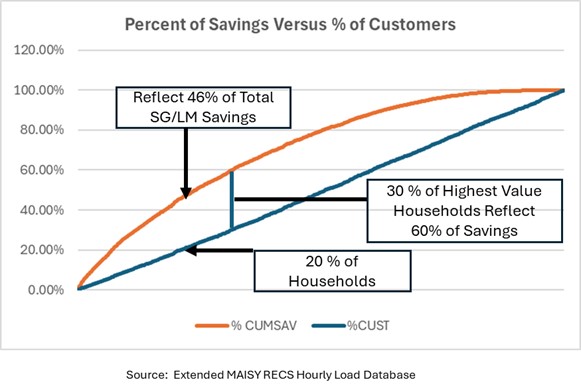| Offsetting The Coming Electricity Demand Surge with Smart Grid Technologies |
Residential Smart Grid and Load Management Technologies Can Offset a Significant Part of The Near-term Challenge Posed by an Unexpected Surge in Electricity Demand |
Summary.A recent Washington Post article highlights challenges facing electric utilities in meeting unexpected increases in electricity demand. For example, Georgia Power’s 10-year industrial forecast is now 17 times larger than it was a short time ago and Arizona Public Service projects a shortfall in transmission capacity within 6 years. Virginia and Texas are experiencing the same critical demand issues while coal plant closures are being delayed in KS, NE, WI and SC. Unexpected increases in data center electricity use for AI, cloud computing and crypto mining along with an upturn in manufacturing growth are identified as the causes of these critical future shortfalls in generation, transmission, and distribution capacities.This study applies US Department of Energy RECS databases extended to include end-use hourly loads to demonstrates how residential smart grid technologies can offset a significant part of this near-term challenge. Analysis of Arizona residential hourly loads suggests that peak demand can be reduced by as much as 10 percent in that state providing critical time to plan and implement necessary grid expansions. Critical Importance of Residential Peak Demand ManagementIndustrial loads (including data centers and manufacturing) tend to reflect relatively flat loads over 24 hours on peak days. Commercial loads increase and then decline after 5pm while residential loads increase significantly in the 4pm to 9 pm period as households prepare meals and undertake a variety of household tasks. Consequently, residential loads tend to boost total system loads more than any other customer class in system peak hours.
The two representative charts at the right show that a 300 percent increase in industrial loads still leaves residential late day loads as a primary contributor to system peaks. Increased industrial energy use increases the importance of managing late day residential peaks with smart grid and load management programs. Smart Grid and Load Management PotentialsMany electric utilities have implemented residential smart grid and load management (SG/LM) programs to reduce system peaks. Late day summer load reductions can be achieved with SG/LM programs for the following end uses:
Analysis of Arizona residential customers loads shows that SG/LM programs can reduce peak electricity demand by a little more than 10 percent providing 4-5 years extra breathing room to plan for and execute electric infrastructure expansion. These results assume 60 percent participation of customers in SG communicating thermostats, water heater load controls, and pauses in kitchen/laundry appliances and pool/spa use along with a 20 percent reduction in other household electricity use. SG/LM impacts are modeled over the peak time period with diminishing impacts of AC and water heating loads (7-9 pm AC savings are 20 percent and water heating loads are 10 percent of their 4-5 pm savings). The charts below show peak day loads with and without these smart grid and load management programs and the savings contributions of each end use. Negative savings reflect AC precooling and AC and water heating “catchups” at the end of the peak period. 
Implementing/Expanding Cost Effective Residential SG and Load Management ProgramsWhile 60 percent program participation is a challenge, targeting households with the greatest potential savings can boost savings with a much smaller program participation and reduce program costs.
Ranking AZ households with respect to potential SG/LM program savings shows that only 20 percent of households with the greatest savings potential account for 45 percent of all potential savings. 60 percent of all potential savings can be achieved with 30 percent of households with the greatest savings potential. Achieving maximum program potential with minimal cost requires a marketing strategy that targets “high value” utility customers based on individual household savings potential and likely program participation. SG/LM program impacts and potential for reducing system loads varies across states depending on climate, prevalence of electric space heating, air conditioning, water heating and appliances. The nationwide trend toward electrification will increase the importance of residential SG/LM in all states. About Jackson AssociatesJackson Associates (JA) publishes MAISY Residential and Commercial Energy Use and Hourly Loads Databases, MAISY RECS Databases and MAISY Scope 3 Emissions Databases. JA also provides smart grid and load management analysis including market sizing, market potential, and target marketing. Clients include technology developers, equipment manufacturers, retail electric providers, electric utilities, state and federal government agencies and other energy-related companies. |
Related MAISY Topics |